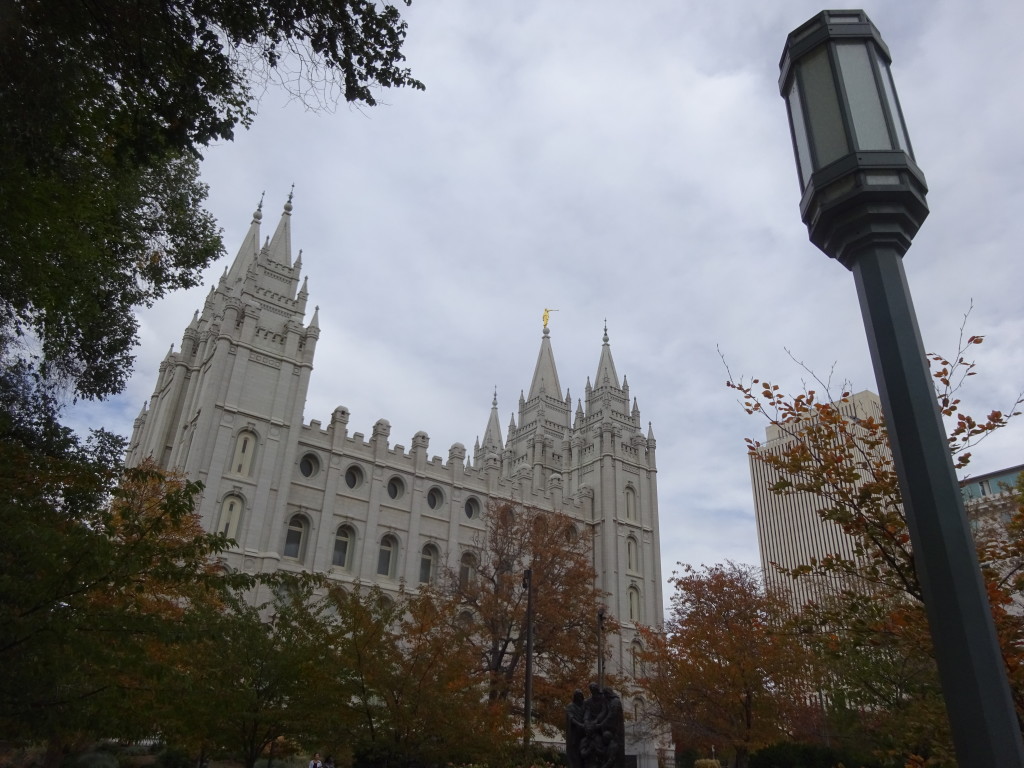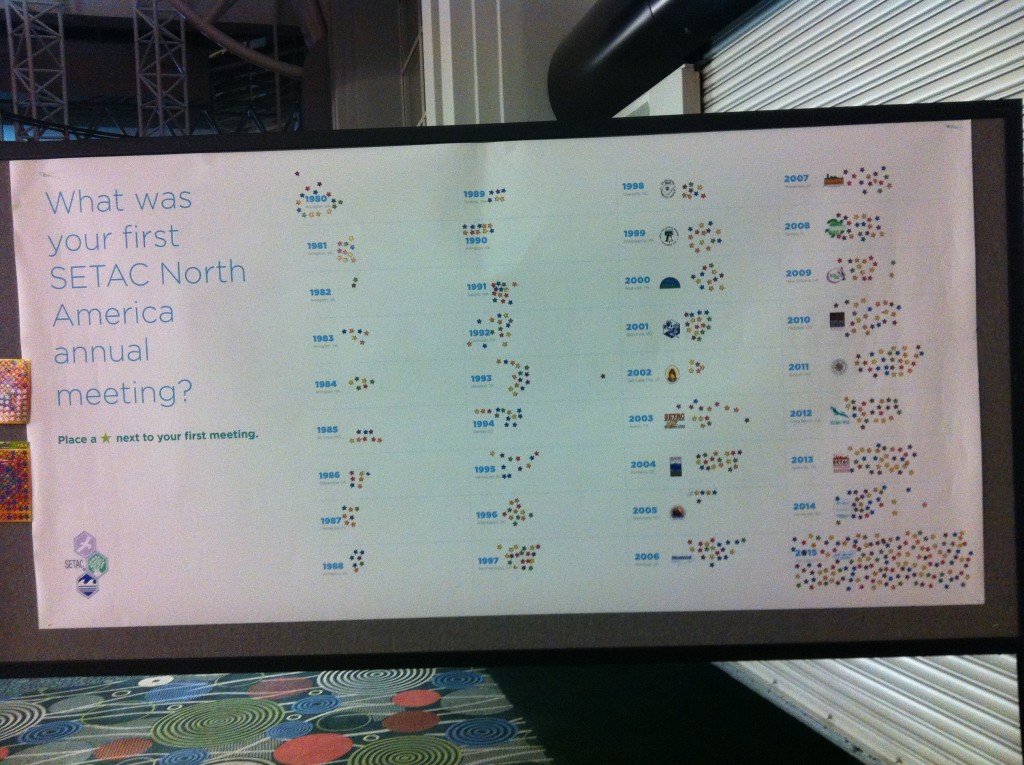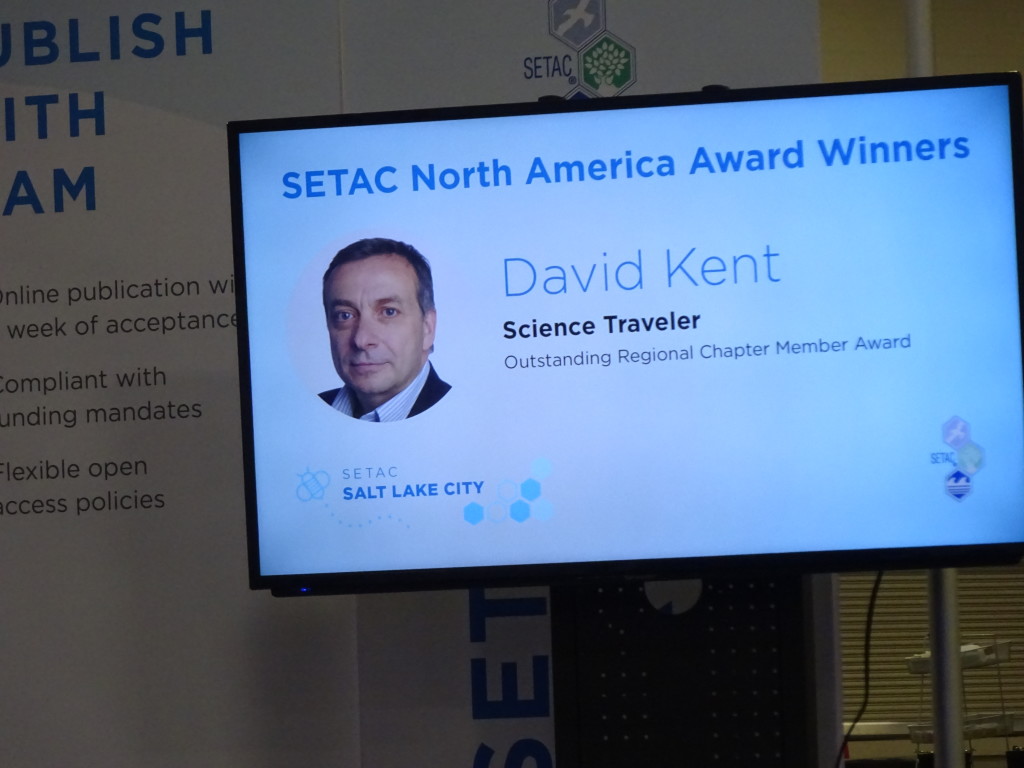I’ve been a member of the Society of Environmental Toxicology and Chemistry (SETAC) for nearly 30 years. Most of those years I’ve attended the annual meeting held in various cities of North America. This past week we were in Salt Lake City, Utah.

Salt Lake City is the center of the Mormon Church, aka, the Church of Latter Day Saints. The temple was a block or so away from the convention center filled with over SETAC members. This year the organizers put up a poster showing all the previous SETAC meeting locations and asked conference participants to put sticky stars on the year they first attended.

The photo above was taken on Tuesday so doesn’t show all of the stars that were later added (the conference ended Thursday evening), but it does suffice to point out a couple of interesting conclusions.
The first SETAC conference was in 1980 and yet there are still many of the original members still attending the meeting each year. In conversations I had with several people, however, it was clear that we are losing some of our older members and that we need to capture their memories. This was a topic of discussion in our Senior Resource Group meeting, which consists of many of the folks that have been coming to meetings for a very long time. As this year progresses we’ll address this need further.
Also evident is the huge number of first time attendees here in Salt Lake City, and that is a very good thing. It means that we are attracting new members (in particular, new master’s and PhD students). Many of the events at SETAC are geared toward student growth, including assigned mentors, career guidance, and travel awards to help pay for costs of attendance.

I received my own award at the opening ceremony. Actually, I received two. The first I knew about: Outstanding Regional Chapter Member Award, which reflects all the work I’ve done for the Chesapeake-Potomac Regional Chapter. SETAC presents about 10 awards each year in an organization with about 7000 members worldwide. The fact that they kept flashing the award winners on flat screens around the convention hall was both a sense of pride and a bit unnerving. I also received a second award, a Presidential Citation for Exemplary Service, which SETAC-North America’s President presented on Monday as I chaired a committee meeting.
As with all such conferences, there were plenty of scientific sessions to attend, including those on emerging issues like microplastics and climate change impacts on environmental toxicology. I ran into many old friends, and even a former employee of mine. He was a technician in the aquatic toxicology I ran long ago; now he’s a university professor with his own entourage of students.
One other chance meeting may also prove fruitful. While traveling the hallways between sessions I ran into a science writer I had met a few years earlier. We caught up as best we could in the few minutes we had, but hit on the idea of a possible book collaboration focused on communicating science to the public. We’ll be following up on that idea shortly.
Until then, it’s back home to recalibrate, rejuvenate, and reconsider a previously anticipated December trip. To paraphrase New England Patriot’s Head Coach Bill Belichick, its “On to the Next Science Traveling!”
David J. Kent has been a scientist for thirty-five years, is an avid science traveler, and an independent Abraham Lincoln historian. He is the author of Tesla: The Wizard of Electricity (now in its 5th printing) and two e-books: Nikola Tesla: Renewable Energy Ahead of Its Time and Abraham Lincoln and Nikola Tesla: Connected by Fate. His book on Thomas Edison is due in Barnes and Noble stores in spring 2016.
Follow me by subscribing by email on the home page. And feel free to “Like” my Facebook author’s page and connect on LinkedIn. Share with your friends using the buttons below.













